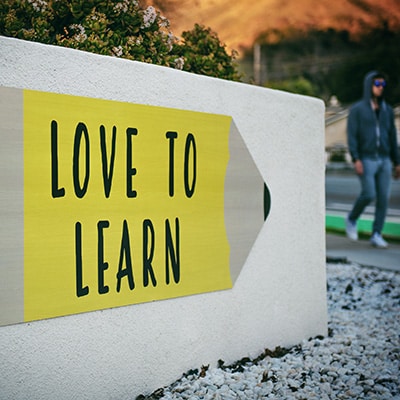Math Lessons 3-5
Teaching 3.OA.A.3 – Multiplication & Division within 100 to Solve Word Problems in Situations Involving Equal groups, Arrays, & Measurement Quantities
Operations & Algebraic Thinking – 3rd Grade Represent and solve problems involving multiplication and division. CCSS.Math.Content.3.OA.A.3 Use multiplication and division within 100 to solve word problems in situations involving equal groups, arrays, and measurement quantities, e.g., by using drawings and equations with a symbol for the unknown number to represent the problem. Teacher Notes Drawings…
More...Interactive Multi-Digit Multiplication Area Model (4th Grade)
Here’s a Free Online Area Multiplication Activity Perfect for teaching area multiplication in your classroom or homeschool lesson Interactive Multi-digit Multiplication Area Model (4th Grade) Dream Box: Multiplication: Open Arrays/Area Models. Students compose arrays, use partial products, and develop an understanding of the distributive property to mentally multiply up to 3-digit by 3-digit numbers. Download…
More...Problem Solving Strategies: Making Math Real (Teacher Video and Lessons)
Problem Solving Strategies – Making Math Real We hear it as math teachers all the time, “Use real-life examples in math problems.” Many of us take the problem given to us in a text book and try to relate it to real life. Sometimes it works, but usually, even though it is a step in…
More...Teaching 3.OA.A.2 – Interpret Whole-Number Quotients of Whole Numbers
Interpret Whole-Number Quotients of Whole Numbers Operations & Algebraic Thinking – 3rd Grade Represent and solve problems involving multiplication and division. CCSS.Math.Content.3.OA.A.2 Interpret whole-number quotients of whole numbers, e.g., interpret 56 ÷ 8 as the number of objects in each share when 56 objects are partitioned equally into 8 shares, or as a number of…
More...Teaching 3.OA.A.1 – Interpret Products of Whole Numbers
Interpret Products of Whole Numbers Operations & Algebraic Thinking – 3rd Grade Represent and solve problems involving multiplication and division. CCSS.Math.Content.3.OA.A.1 Interpret products of whole numbers, e.g., interpret 5 × 7 as the total number of objects in 5 groups of 7 objects each. For example, describe a context in which a total number of…
More...Teaching 4.G.A.3 – Recognize and Draw Lines of Symmetry & Identify Line-Symmetric Figures
Recognize and Draw Lines of Symmetry Geometry – 4th Grade Draw and identify lines and angles, and classify shapes by properties of their lines and angles. CCSS.Math.Content.4.G.A.3 Recognize a line of symmetry for a two-dimensional figure as a line across the figure such that the figure can be folded along the line into matching parts.…
More...Teaching 4.G.A.1 .2 – Draw Points, Lines, Line Segments, Rays, Angles (Right, Acute, Obtuse) & Perpendicular & Parallel Lines – Classify Two-Dimensional Figures & Identify Right Triangles
Draw Points, Lines, and Angles Geometry – 4th Grade Draw and identify lines and angles, and classify shapes by properties of their lines and angles. CCSS.Math.Content.4.G.A.1 Draw points, lines, line segments, rays, angles (right, acute, obtuse), and perpendicular and parallel lines. Identify these in two-dimensional figures. CCSS.Math.Content.4.G.A.2 Classify two-dimensional figures based on the presence or…
More...4.MD.C.6 .7 – Measure and Sketch Angles in Whole-Number Degrees using a Protractor & Recognize Angle Measure as Additive
Measure and Sketch Angles in Whole Number Degrees Measurement & Data – 4th Grade Geometric measurement: understand concepts of angle and measure angles. CCSS.Math.Content.4.MD.C.6 Measure angles in whole-number degrees using a protractor. Sketch angles of specified measure. CCSS.Math.Content.4.MD.C.7 Recognize angle measure as additive. When an angle is decomposed into non-overlapping parts, the angle measure of…
More...Teaching 4.MD.C.5 .a .b – Understand Angles and Concepts of Angle Measurement
Understanding Angles and Concepts of Angle Measurement Measurement & Data – 4th Grade Geometric measurement: understand concepts of angle and measure angles. CCSS.Math.Content.4.MD.C.5 Recognize angles as geometric shapes that are formed wherever two rays share a common endpoint, and understand concepts of angle measurement: CCSS.Math.Content.4.MD.C.5.a An angle is measured with reference to a circle with…
More...Teaching 4.MD.A.3 – Apply Area and Perimeter Formulas for Rectangles in Real World and Mathematical Problems
Applying Area and Perimeter Formulas for Rectangles in the Real World Measurement & Data – 4th Grade Solve problems involving measurement and conversion of measurements. CCSS.Math.Content.4.MD.A.3 Apply the area and perimeter formulas for rectangles in real world and mathematical problems. For example, find the width of a rectangular room given the area of the flooring…
More...Teaching 4.MD.A.2 – Use the Four Operations to Solve Problems Involving Measurement and Conversion
Using the Four Operations to Solve Problems Involving Measurement and Conversion Measurement & Data – 4th Grade Solve problems involving measurement and conversion of measurements. CCSS.Math.Content.4.MD.A.2 Use the four operations to solve word problems involving distances, intervals of time, liquid volumes, masses of objects, and money, including problems involving simple fractions or decimals, and problems…
More...




